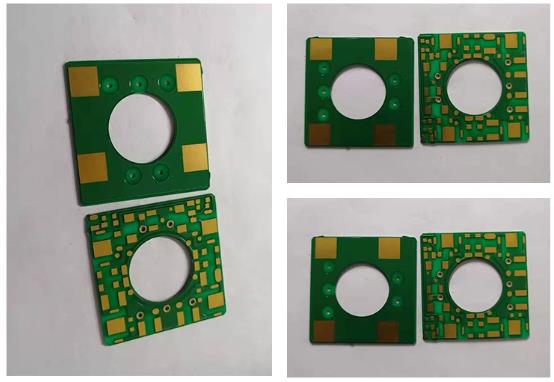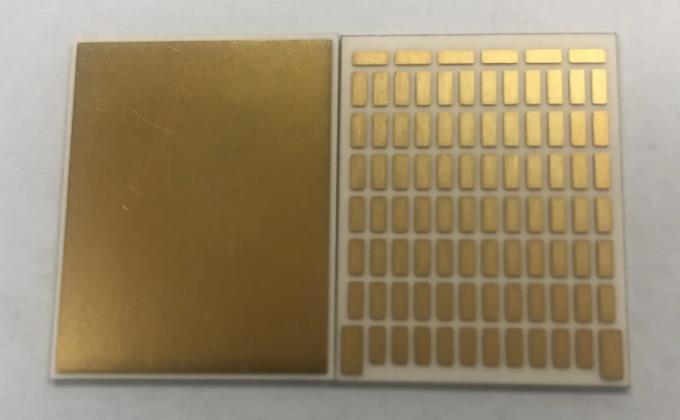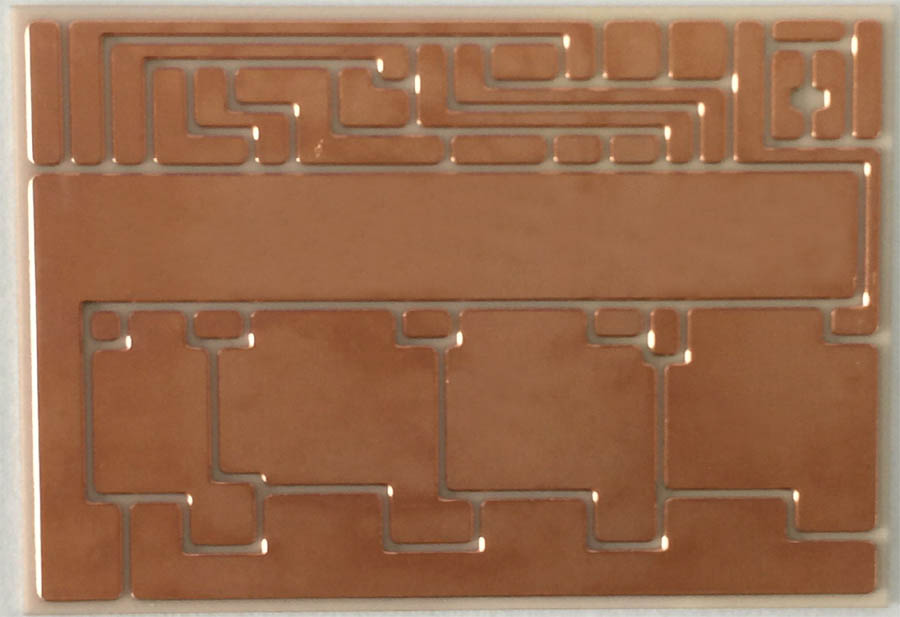Aluminium oxide ceramics is a kind of ceramic material with Al2O3 as the main raw material and corundum (α- Al2O3) as the main crystal phase. Alumina ceramics are characterised by high mechanical strength, high hardness, low high-frequency dielectric losses, high insulation resistance at high temperatures, good resistance to chemical corrosion and good thermal conductivity, as well as a wide range of raw materials, relatively inexpensive, and relatively mature processing and manufacturing technology.
Alumina ceramics have been widely used in electronics, electrical appliances, machinery, chemical industry, textile, automobile, metallurgy and aviation aerospace industries, and have become the world's largest amount of oxide ceramic materials. However, since the melting point of alumina is as high as 2050℃, the sintering temperature of alumina ceramics is generally higher, which makes the manufacture of alumina ceramics require the use of high-temperature heaters or high-quality fuels as well as high-grade refractories for furnaces and kilns, which to a certain extent restricts the production and wider application of alumina ceramics.
At present, the research work on the low-temperature sintering technology of alumina ceramics LTCC has been very extensive and in-depth, from 75 porcelain to 99 porcelain have systematic research, and the industry has achieved remarkable results. Table 1 shows the low-temperature sintering of various types of alumina ceramics that have been achieved.

Aluminium oxide ceramic circuit boards
Looking at the current LTCC low-temperature sintering technology of various alumina ceramics, it is summarised that measures are mainly taken from three aspects, such as raw material processing, formula design and sintering technology.
1.Improve the fineness and activity of Al2O3 powder to reduce the sintering temperature of porcelain.
Compared with the lump, the powder has a large specific surface area, which is the result of the outside world on the powder work.The use of mechanical action or chemical action to prepare the powder when the consumption of mechanical or chemical energy, part of the surface energy will be stored in the powder, in addition, in the preparation process of powder,and will cause the surface of the powder particles and its internal lattice defects of all kinds of lattice, so that the lattice activation. For these reasons, the powder has a high surface free energy. This surface energy of the powder is the intrinsic driving force of its sintering.In this case,the finer the grains of Al2O3 powder,the higher the degree of activation, the easier the powder sintering, the lower the sintering temperature. In the low-temperature sintering technology of alumina ceramics,the use of highly active and easy to sinter Al2O3 powder as a raw material is one of the important means, so the powder preparation technology has become a basic link in the low-temperature sintering technology of ceramics.
At present,the preparation of ultrafine activated sinterable Al2O3 powders can be divided into two major categories,one is the mechanical method, and the other is the chemical method.Mechanical method is to use mechanical external force to make Al2O3 powder particle refinement,commonly used crushing processes are ball mill crushing,vibration mill crushing,sand mill crushing, air flow crushing and so on. Through the mechanical crushing method to improve the specific surface area of the powder,although it is effective,but there is a certain limit,usually can only make the average particle size of the powder is small to about 1 μ m or finer, and there is a wider range of particle size distribution, it is easy to bring in the shortcomings of impurities.
In recent years, the use of wet chemical method to produce ultrafine high purity Al2O3 powder development is faster,of which the more mature is the sol-gel method. Since the sol is highly stable, many metal ions can be evenly and stably distributed in the gel, which can be further dehydrated to form a homogeneous gel (amorphous body), and then after suitable treatment, ultra-fine powder mixed oxides or homogeneous solid solutions can be obtained with extremely high activity. Currently, there are three types of processes for this method.
1) Formation of metal-oxygen organic-based networked sol →hydrolysis and condensation into a three-dimensional polymer structure containing hydroxyl groups → sol evaporation and dehydration into a gel → low-temperature calcination into an active oxide powder.
2)Acid salt solution containing different metal ions and organic gel mixed into solution→sol evaporation and dehydration into gel→low temperature calcination into powder.
3)The sol containing different metal ions is quenched, deposited or heated directly into a gel → low temperature calcination into powder. Wet chemical method prepared by the Al2O3 powder particle size can reach the nanometer level, particle size distribution range is narrow, high chemical purity, crystal defects. The surface energy and activity of the chemical powder is much higher than that of the mechanical powder. Adopting this kind of ultra-fine Al2O3 powder as raw material can not only obviously reduce the sintering temperature of alumina porcelain (can be reduced by 150℃-300℃), but also obtain microcrystalline high-strength alumina porcelain materials.
In addition, some experts recommend the following three methods of preparing ultra-fine Al2O3 powder for reference only:
(1) Mixing (NH4)SO4Al2(SO4)3-2H2O with (MgCO3)4Mg(OH)2-5H2O and decomposing them by heating to 1200°C, we can obtain α- Al2O3 ultrafine powder with 99% purity of MgO and 02-05 μ m fineness.
(2) Anhydrous aluminium diacetate is heated to 1200°C for more than 3 hours, and α- Al2O3 ultrafine powder with fineness less than 05 μ m can be obtained.
(3) Iron cylinder and steel ball, wet grinding for hundreds of hours, slurry heating and acid washing to remove iron, flotation, repeated many times, can produce 03-05 μ m fineness of α-Al2O3 ultrafine powder.

Aluminium oxide ceramic circuit boards
2.Through the porcelain material formula design doping to reduce the porcelain body sintering temperature
The sintering temperature of alumina ceramics is mainly determined by the content of Al2O3 in its chemical composition, the higher the content of Al2O3, the higher the sintering temperature of the porcelain, in addition to the composition of the porcelain material system, the composition of the ratio and the type of additives.
For example, when the Al2O3 content is equal, the sintering temperature of CaO-Al2O3-SiO2-based Al2O3 materials is lower than that of MgO-Al2O3-SiO2-based materials, and the CaO-MgO-Al2O3-SiO2-based materials, which are currently mass-produced in China, have higher sintering temperatures than the MgO-Al2O3-SiO2-based materials. -MgO-Al2O3-SiO2 system porcelain, in order to make it has lower sintering temperature and good performance, we should control its SiO2/CaO in 16~06, the content of MgO is not more than 1/3 of the total amount of frit oxides, and at the same time, introduce a small amount of At the same time, the introduction of a small amount of La2O3, Y2O3, Cr2O3, MnO, TiO2, ZrO2, Ta2O3 and other oxides in the formula can further reduce the sintering temperature, improve the microstructure of the porcelain and efficiency.
Therefore,under the premise of ensuring that the ceramic body meets the purpose of product use and scientific and technological requirements,we can choose a reasonable system of ceramics through the design of the formula and add appropriate sintering additives, so that the sintering temperature of alumina ceramics can be reduced as much as possible.
At present, the various additives added in the formula design can be divided into two categories,namely,additives for forming new phase or solid solution and additives for generating liquid phase,according to their different mechanisms of promoting the sintering of alumina ceramics.
(1) Additives that form a new phase or solid solution with Al2O3.
These additives are some oxides with lattice constants close to those of alumina,such as TiO2,Cr2O3,Fe2O3, MnO2, etc. In firing, these additives can generate solid solutions with Al2O3,which are either doped solid solutions (e.g., when Ti4+ replaces Al3+), or finite solid solutions, or continuous solid solutions (e.g., formed by Cr2O3 and Al2O3),and they can activate the lattice (due to the difference in radii of TI4+ and Al3+ ions),form cavities or form new phases with Al2O3. They can activate the crystal lattice (due to the difference in ionic radii of TI4+ and Al3+), form cavities or migrate atoms, (3TiO2AbO33Tia1+Va1+60), and deform the crystal lattice,which make Al2O3 ceramics susceptible to recrystallisation and sintering. For example, the addition of 05 ~ 10% of TiO2, can make the porcelain sintering temperature drop 150-200 ℃.
Solid-phase sintering pipeline-based high-alumina ceramics often use such additives, for example, a black alumina ceramics formula is as follows (wt%): Al2O391, CoO05, MnO237, Cr2O321, SiO204, TiO220, V2O303, the porcelain at 1350 ℃ to keep the temperature of 2 hours firing.
This kind of additives to promote the sintering of alumina porcelain has a certain regularity:
①The additives that can form a limited solid solution with Al2O3 have a greater temperature reduction effect than the additives that form a continuous solid solution;
②Variable ionic additives have a greater effect than non-variable additives;
③Additives with high cationic charge and high electric price have greater temperature reduction effect.
It should be noted that, due to the lack of liquid phase sintering conditions of this type of additives (heavy crystal sintering), so it is more difficult to fill the pores in the crystal, the airtightness is poorer, and thus the electrical performance decreases more in the design of the formula to be taken into account.
(2) sintering in the formation of liquid phase additives.
The chemical composition of such additives are mainly SiO2, CaO, MgO, SrO, BaO, etc., they can be with other components in the firing process to form a binary, ternary or multi-component low eutectic. Due to the low generation temperature of the liquid phase, the sintering temperature of alumina ceramics is greatly reduced. When there is a considerable amount (about 12%) of liquid phase, solid particles have a certain solubility in the liquid phase and solid-phase particles can be wetted by the liquid phase, the sintering promotion effect is also more significant. The mechanism is based on the wetting force of the liquid phase on the surface of the solid phase and the surface tension, both of which make the solid-phase particles close to and fill the pores.
In addition, the sintering process because of the small defective crystals with large surface activity, so the solubility in the liquid phase is much larger than that of large crystals. In this way, the sintering process in the small crystals continue to grow, the pores reduce, recrystallisation occurs. In order to prevent excessive grain growth due to recrystallisation, affecting the mechanical performance of ceramics, in the design of the formula need to consider the selection of some of the grain size does not affect or even inhibit the grain size of the additives, such as MgO, CuO and NiO and so on.
At present, in the liquid phase sintered Al2O3 ceramic formulations, the following three types of additives can be used to add combustion aids.
① Add in the form of natural minerals. This kind of mineral raw materials mainly include: kaolin, bentonite and other clay mines. Quartz, talc, magnesite, dolomite, calcite, etc., which introduce chemical components such as SiO2, MgO, CaO, etc. respectively. The use of kaolin and other clay minerals in the formulation not only meets the requirements of the chemical composition of the porcelain body, but also mainly improves the moulding performance of the blanks. This form of additives is suitable for Al2O3 content of less than 90% of the alumina porcelain ingredients, such as a low-temperature sintering 75 porcelain formula is as follows (wt%): calcined Al2O365, kaolin 24, bentonite 2, BaCO34, calcite 3, talc 2.
② Add in the form of synthetic additives.This method is based on the use of CaO-Al2O3-SiO2, MgO-Al2O3-SiO2, CaO-MgO-Al2O3 This method is to find the composition point of the lowest co-soluble material in the ternary, quaternary or other phase diagrams such as CaO-Al2O3-SiO2,MgO-Al2O3-SiO2,CaO-MgO-Al2O3-SiO2, CaO-MgO-Al2O3-SiO2, etc., and then make the first dosage of CaO, MgO, SiO2, Al2O3, etc., according to the components of the composition point, and then add them to the artificial additives according to a certain ratio.Then the synthetic additives and Al2O3 powder are dosed for the second time according to a certain ratio to meet the chemical composition and performance requirements of alumina ceramics.This method has high purity and is mainly used to reduce the sintering temperature of high alumina ceramics with accurate chemical composition and high performance requirements. The disadvantages of this method are complicated technology,high energy consumption and high cost of products, which are only adopted under special circumstances.
③Added in the form of chemical raw materials. When batching,various chemical raw materials are directly used as additives to complete the batching with Al2O3 powder, and the composition ratio of each sintering additive is still set with reference to the composition of the lowest eutectic point in the professional phase diagram. Production practice has proved that this method not only with synthetic additives have the same cooling effect, but also greatly simplifies the process, whether the formula design, dosage calculation and process are easier than synthetic additives, but also easier than the natural mineral form, porcelain performance is stable, energy-saving benefits. In actual production, from the cost reduction and billet moulding performance considerations, natural mineral raw materials and chemical raw materials are often used at the same time. For example, a low-temperature firing (1500 ℃ × 2h) of high alumina porcelain formula is as follows (wt%); α- Al2O393, Suzhou soil 3, burnt bone stone 2, CaCO315, BaCO305, plus ZrO2, CeO2, La2O32%.

Aluminium oxide ceramic circuit boards
3.Adopt special sintering technology to reduce the sintering temperature of the porcelain body
Hot pressure sintering process, in the heating of the body at the same time as the pressure,then sintering is not only through the diffusion of the mass to complete,this time the plastic flow plays an important role,the sintering temperature of the body will be a lot lower than the normal pressure sintering, hot pressure sintering is one of the important science and technology to reduce the temperature of sintering of Al2O3 ceramics.
At present, there are two kinds of hot pressure sintering method, pressure sintering method and high temperature isostatic pressure sintering method (HIP).The HIP method can make the billet subjected to isotropic pressure, and the microstructure of ceramics is more homogeneous than the pressure sintering method.In the case of alumina ceramics,if ordinary sintering at atmospheric pressure must be burned to a high temperature of over 1800°C, hot pressure sintering at 20MPa, at a lower temperature of about 1,000°C has been densified.
Hot-pressure sintering technology not only significantly reduces the sintering temperature of alumina ceramics,but also better inhibits the growth of grain size, and can obtain dense microcrystalline high-strength alumina ceramics, which is especially suitable for the sintering of transparent alumina ceramics and microcrystalline corundum ceramics.
In addition,since the sintering process of alumina is related to the diffusion rate of anions,the reducing atmosphere is conducive to the addition of anion vacancies,which can promote the sintering process. In this way, vacuum sintering and hydrogen atmosphere sintering are effective auxiliary aids to achieve low-temperature sintering of alumina ceramics.
In production practice, in order to obtain the best comprehensive economic benefits, the above LTCC low-firing technology is often used in conjunction with each other,in which the addition of sintering additives relative to other methods, has a low cost, good results, and process simplicity and practicality. It is widely used in the production of alumina ceramics,high alumina ceramics and corundum ceramics.In addition,from the material point of view, by means of doping modification technology, the mechanical and electrical performance of alumina ceramics can be greatly improved,and the replacement of porcelain with high Al2O3 content by porcelain with low Al2O3 content is also an effective scientific and technological means commonly used by enterprises to reduce the sintering temperature of alumina ceramic products. For example, in the material performance to meet the requirements of product use,85 porcelain instead of 90 porcelain or 95 porcelain, 90 porcelain, 95 porcelain instead of 99 porcelain, etc. are feasible.
Although alumina ceramics LTCC low-firing technology has achieved better economic benefits,but there is still potential to dig, there are still some products, from the special performance requirements of the material and the dimensional stability of the device under high-temperature state considerations, still using high-temperature sintering,how to reduce the sintering temperature of this type of product is also down, is the direction of the efforts of the future ceramics doping and modification and other low-firing technology.